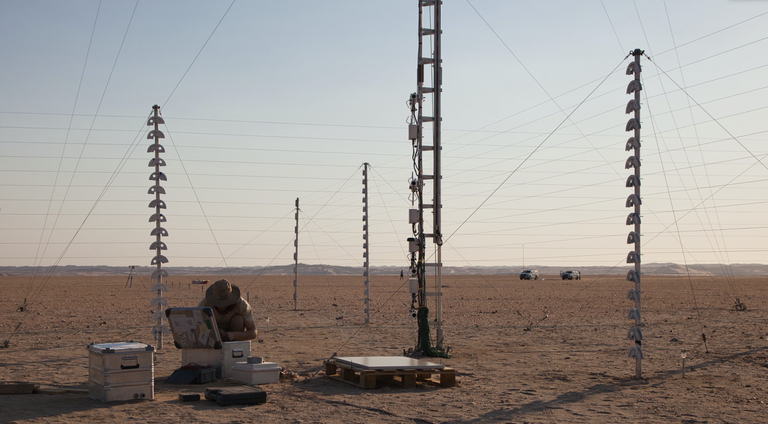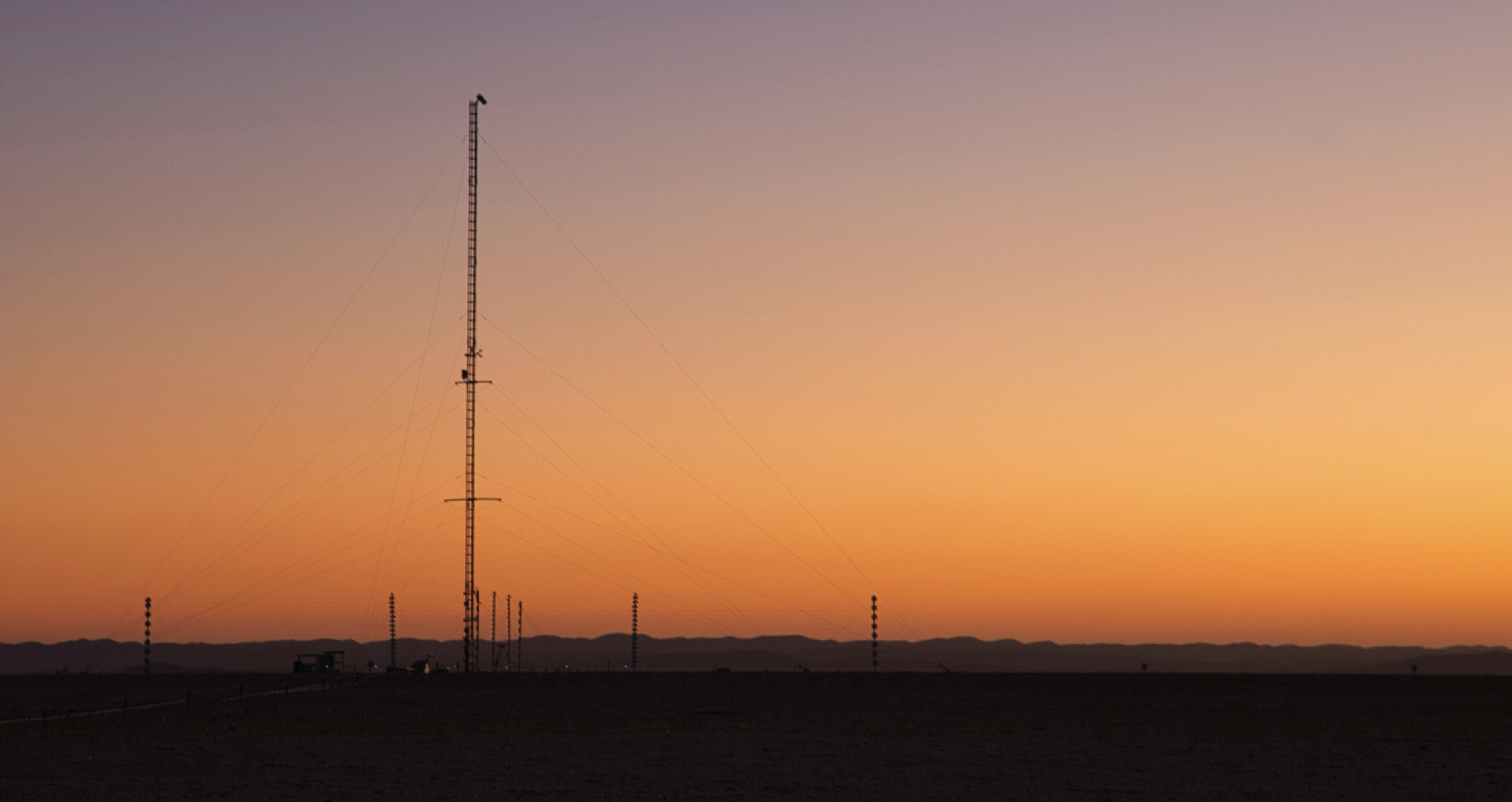Namib Turbulence EXperiment (NamTEX)
The Namib Turbulence EXperiment (NamTEX) was a multi-national micrometeorological campaign conducted in the Central Namib Desert in February and March 2020 to investigate the three-dimensional structure of near-surface turbulent flow and study how turbulent motions control the spatio-temporal patterns of heat transfer between the (sub-)surface and atmosphere.

A 3 km long fibre-optic distributed temperature sensor was suspended in a 3D array and sampled air temperature perturbations caused by turbulent eddies (Photo: R. Hilland).
A 3 km fibre-optic distributed temperature sensor (DTS) was suspended in a pseudo-3D array within a 300 x 300 m area to provide vertical cross-sections of air temperature fluctuations. Drone- and ground-based thermal imagers mapped high- resolution surface temperature fluctuations within the area and revealed the thermal imprint of atmospheric structures responsible for (sub-)surface-atmosphere heat exchange. High-resolution soil temperature and moisture profiles together with heat flux plates provided information on near-surface soil dynamics. Turbulent fluxes were measured with a vertical array of five eddy-covariance point measurements on a 21 m tower, as well as by co-located small- and large-aperture scintillometers. With simultaneous measurements of the sub-surface, surface, and air temperatures, NamTEX seeks to reconstruct the 3D structure of the turbulent flow and will investigate what a spatial understanding of turbulent flow means for some of the most pressing questions in micrometeorology.
Conceptual illustration of the measurement setup with a simultaneous recording of the heat transport in the atmosphere (blue), temperature fluctuations on the surface (red) and in the soil substrate (brown).

On this large mast in the center of the experimental setup, wind and turbulence were recorded directly with ultrasonic anemometers. Surface temperature fluctuations were continuously measured with a high-resolution mast-based Infratec camera (Photo: R. Hilland).
The Namib provided an ideal location for fundamental research that revisits some key assumptions in micrometeorology and advances knowledge of energy and mass exchange dynamics: Homogenous flat surfaces, no vegetation, little moisture, and cloud-free skies create a strong and consistent diurnal forcing, resulting in a wide range of atmospheric stabilities.
Researchers involved
- Prof. Dr. Andreas Christen
- Rainer Hilland, M.Sc.
- May Bohmann, B.Sc.
Collaborators
Technical Documentation
- Hilland RVJ, Bernhofer C, Bohmann M, Christen A, Krauß M, Larsen JA, Pitacco A, Spirig R, Vendrame N, Vogt R, 2022: Namib turbulence experiment (NamTEX) data report. Professur für Umweltmeteorologie, V1 (Public), 10.6094/UNIFR/231047
Selected Publications
- Hilland RVJ, Bernhofer C, Bohmann M, Christen A, Katurji M, Maggs-Kölling G, Krauß M, Larsen JA, Marais E, Pitacco A, Schumacher B, Spirig R, Vendrame N, Vogt R, 2022: The Namib Turbulence Experiment: Investigating Surface–Atmosphere Heat Transfer in Three Dimensions. Bulletin of the American Meteorological Society, 103 (3) E741–E760.
- Hilland RVJ, Bernhofer C, Bohmann M, Christen A, Krauß M, Larsen JA, Pitacco A, Spirig R, Vendrame N, Vogt R, 2022: Namib turbulence experiment (NamTEX) data report. Professur für Umweltmeteorologie, V1 (Public), 10.6094/UNIFR/231047

